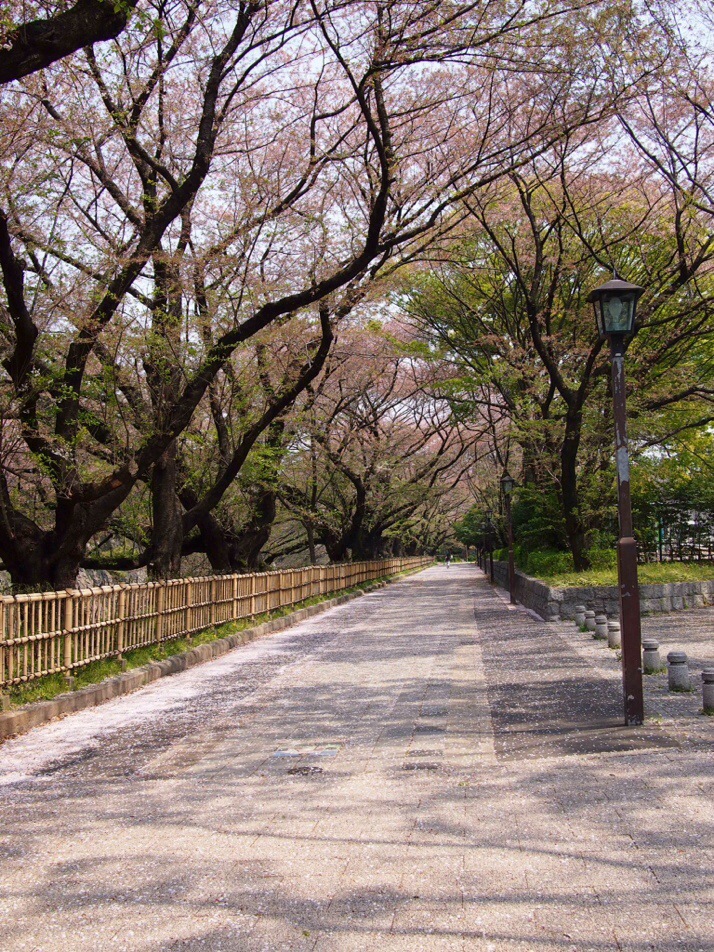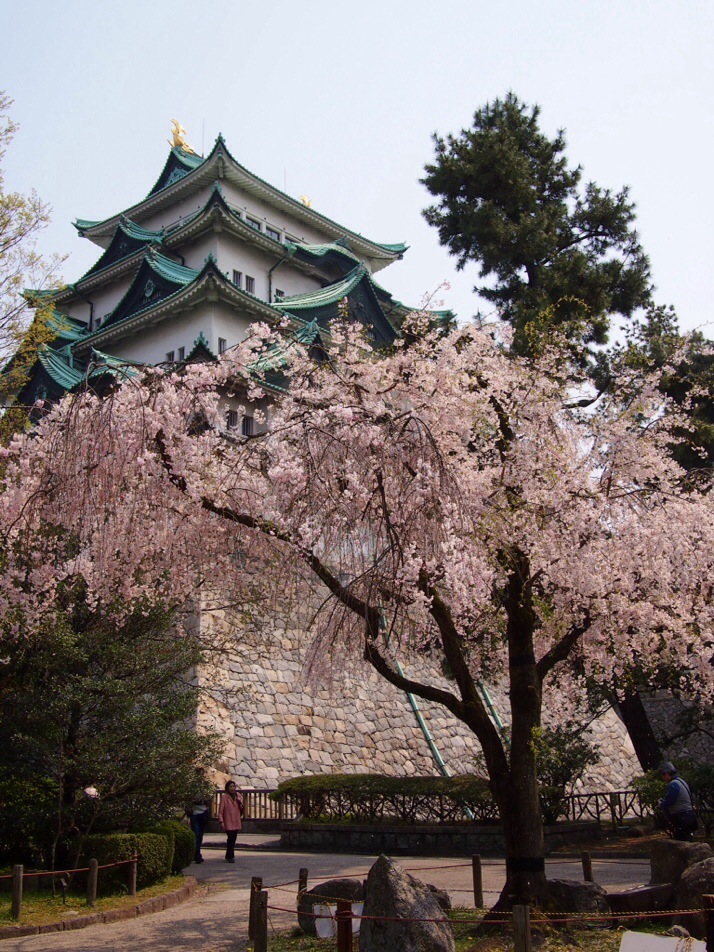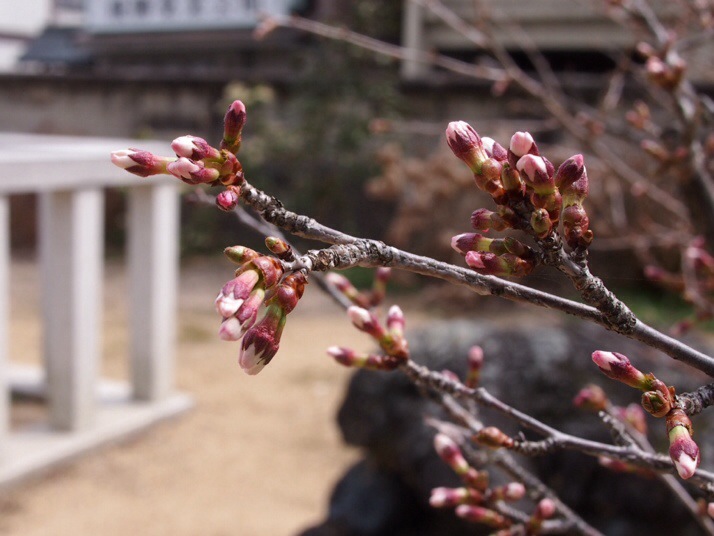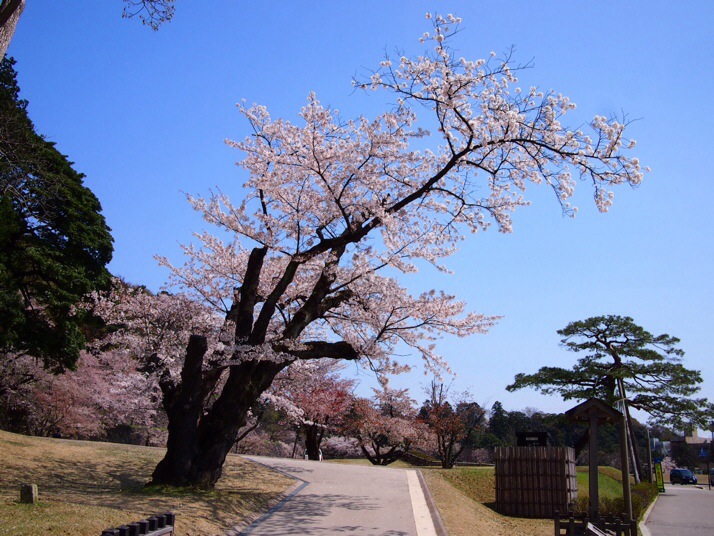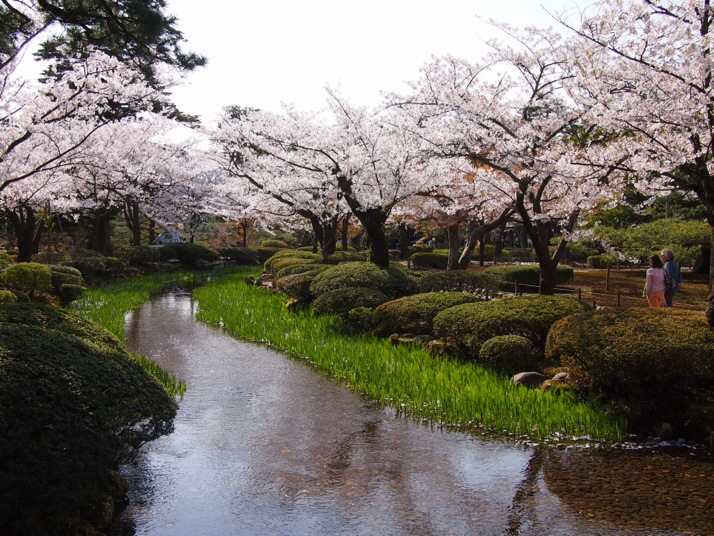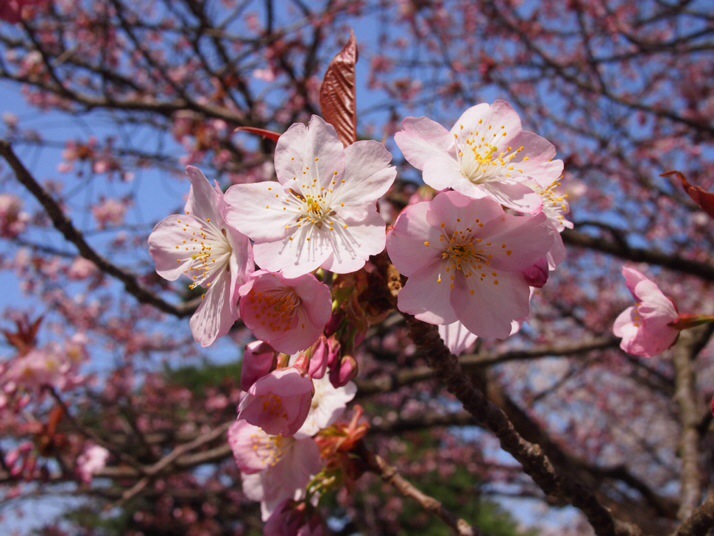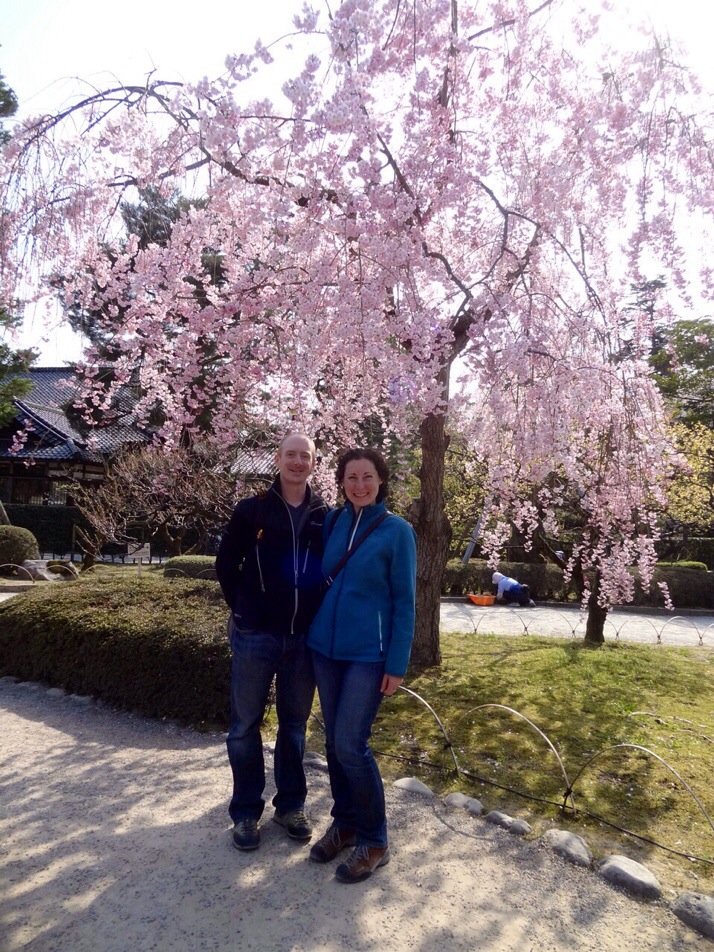Markets are some of our favourite places to visit. For a start we love food and it’s always interesting to see the exotic (to us) ingredients available to local cooks, and they are usually interesting and colourful places to photograph too. We’ve found Japanese markets to be just as interesting as the ones we visited in Riga, Hong Kong, Vietnam and Bangladesh, and three very different markets from the first half of our stay in Japan really stand out.
Omicho Market, Kanazawa
The Omicho market in Kanazawa really feels like a locals market. It is comprised of stalls mainly offering fresh ingredients and is arranged in a series of covered corridors. There were lots of restaurants around the fringes and on the second floor, we ate at a couple of them during the few days that we stayed in Kanazawa.
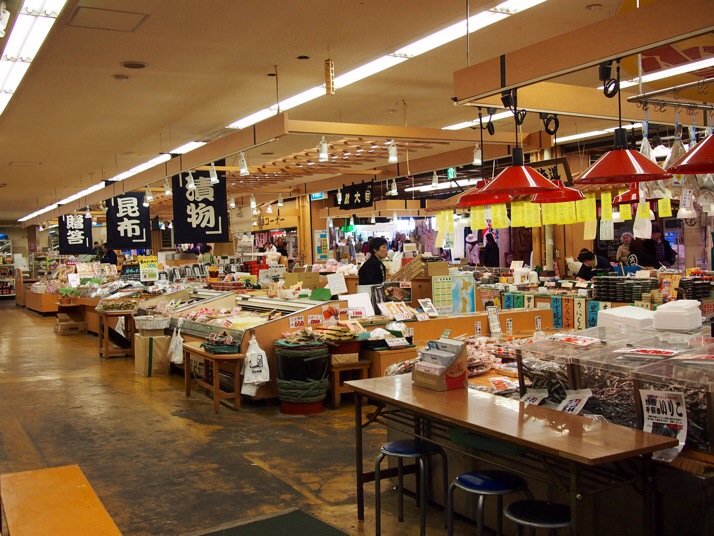 A quiet corner of Omicho Market
A quiet corner of Omicho Market
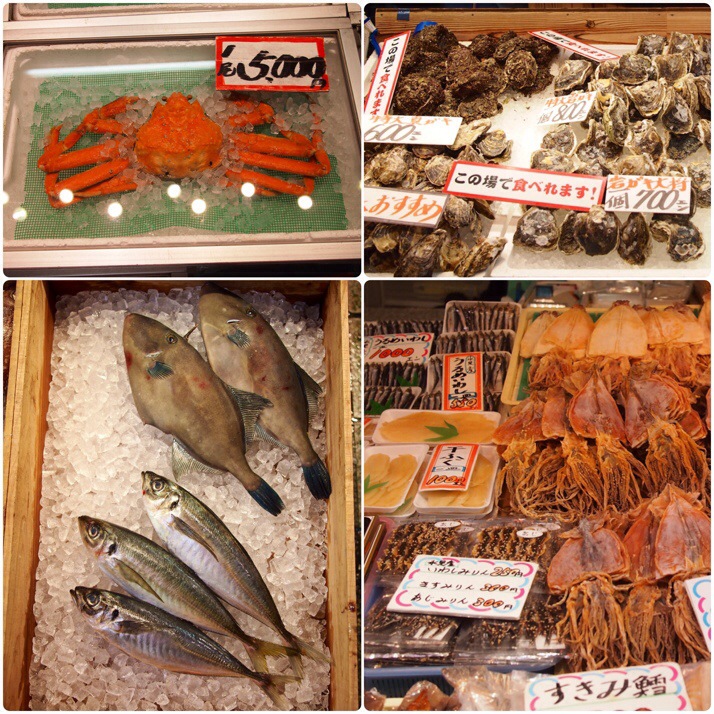 All kinds of fish feature heavily from live oysters to dried squid, and especially big red crabs, this fine specimen is priced at just under £30!
All kinds of fish feature heavily from live oysters to dried squid, and especially big red crabs, this fine specimen is priced at just under £30!
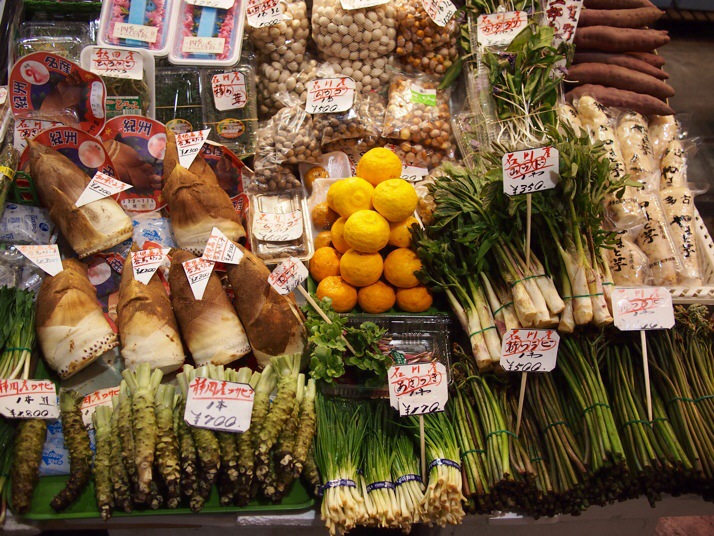 Japanese vegetables – that’s fresh wasabi in the bottom left, bamboo shoots above it and the white vegetable with green leaves to the right of the lemons is called udo
Japanese vegetables – that’s fresh wasabi in the bottom left, bamboo shoots above it and the white vegetable with green leaves to the right of the lemons is called udo
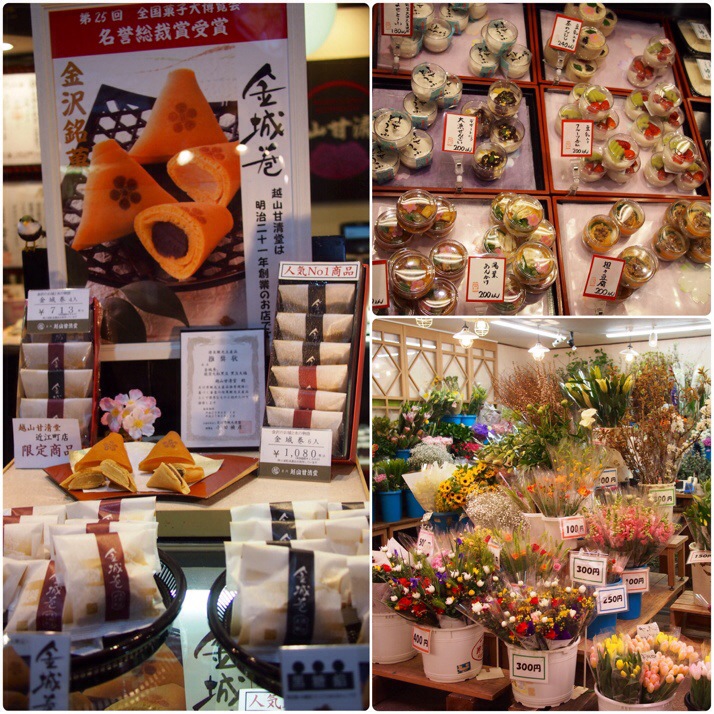 Non-fish and vegetable stalls include cakes, desserts and flowers
Non-fish and vegetable stalls include cakes, desserts and flowers
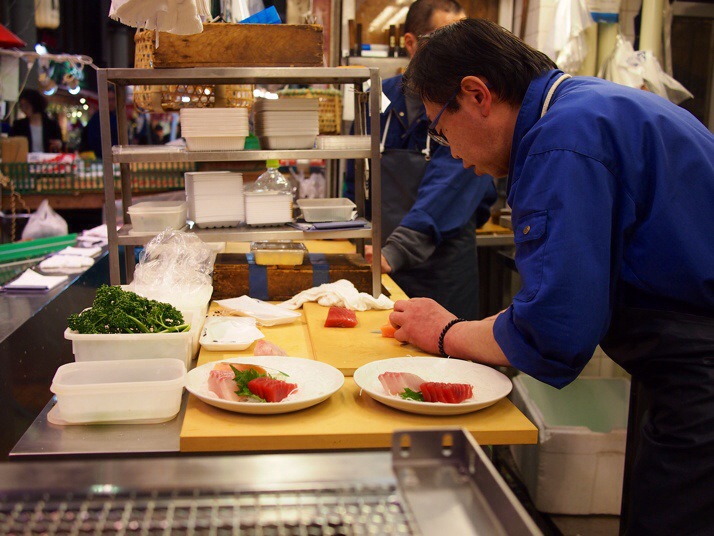 We enjoyed sashimi bought from the fishmonger for lunch one day – eaten standing at the side of his stall
We enjoyed sashimi bought from the fishmonger for lunch one day – eaten standing at the side of his stall
Nishiki Market, Kyoto
This very long covered market stretches for four or five blocks through the centre of Kyoto. It was a great place to spend a rainy afternoon, unfortunately lots of other people had the same thought so we spent much of the time shuffling along in a crush of bodies. There were a lot of weird and wonderful traditional foodstuffs that we attempted to identify, with enough samples to keep things interesting and the occasional souvenir shop as well.
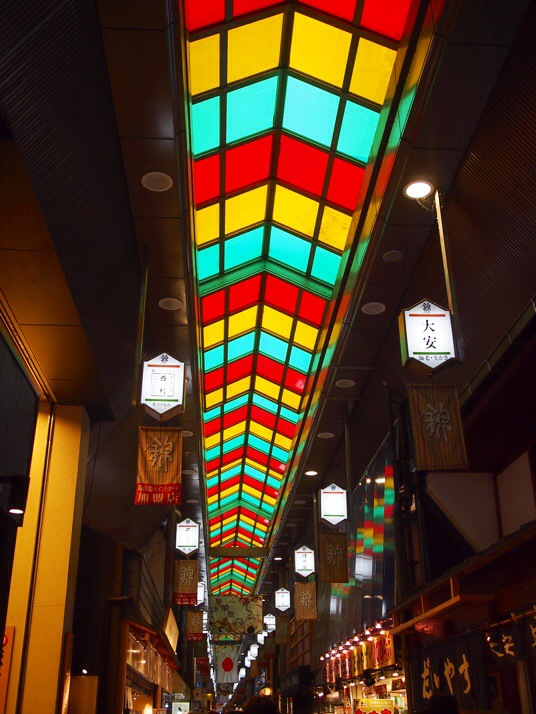 Stained glass skylight over Nishiki market
Stained glass skylight over Nishiki market
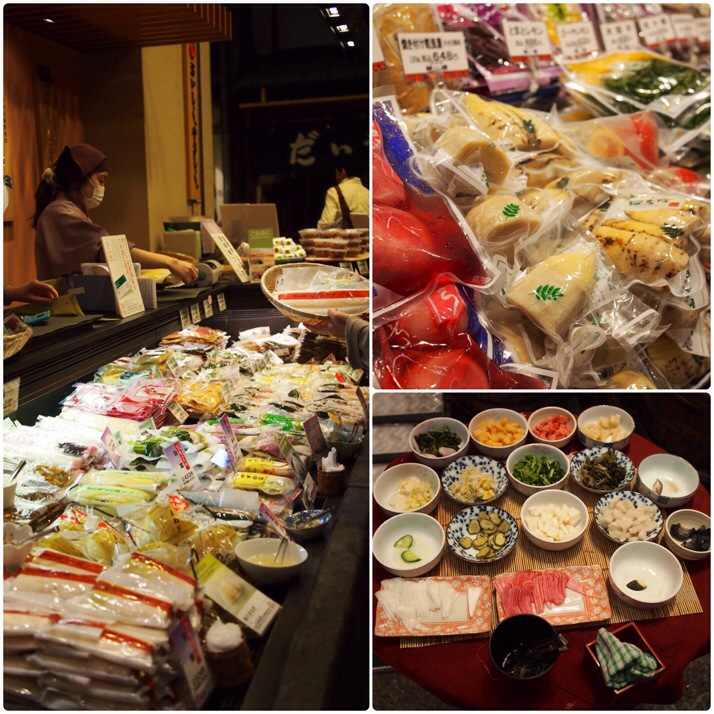 Vast arrays of pickled vegetables
Vast arrays of pickled vegetables
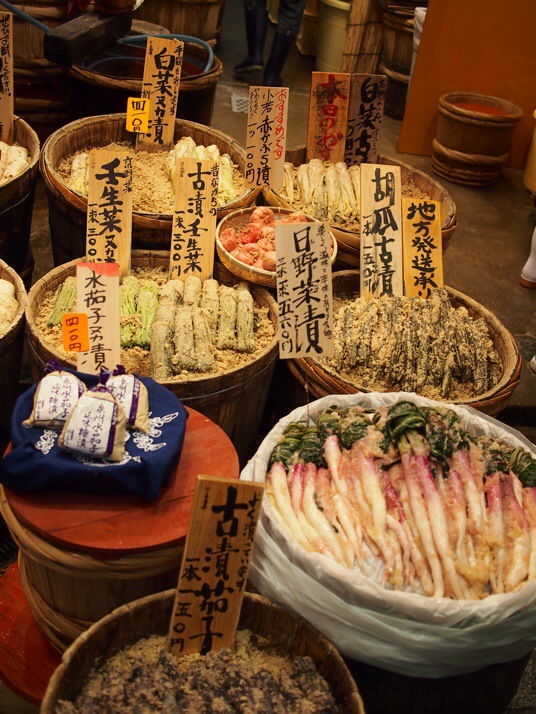 Miso pickled vegetables (called misozuke) are made using a fermented soy bean paste
Miso pickled vegetables (called misozuke) are made using a fermented soy bean paste
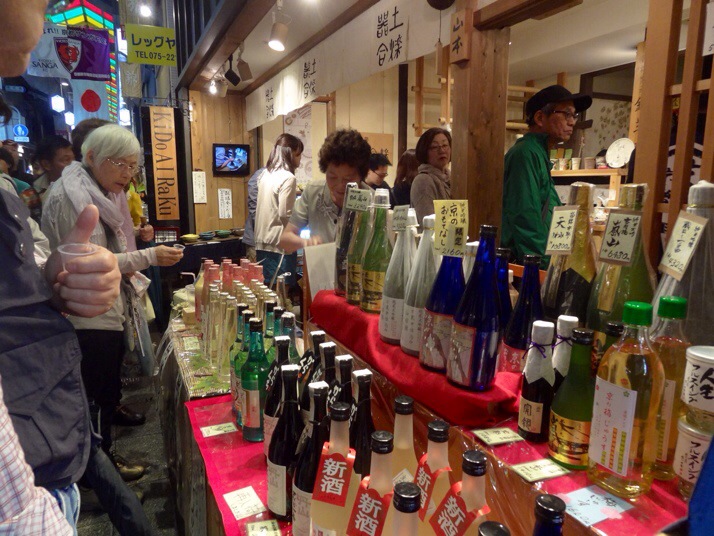 We managed to score several samples of sake by looking simultaneously appreciative and indecisive :)
We managed to score several samples of sake by looking simultaneously appreciative and indecisive :)
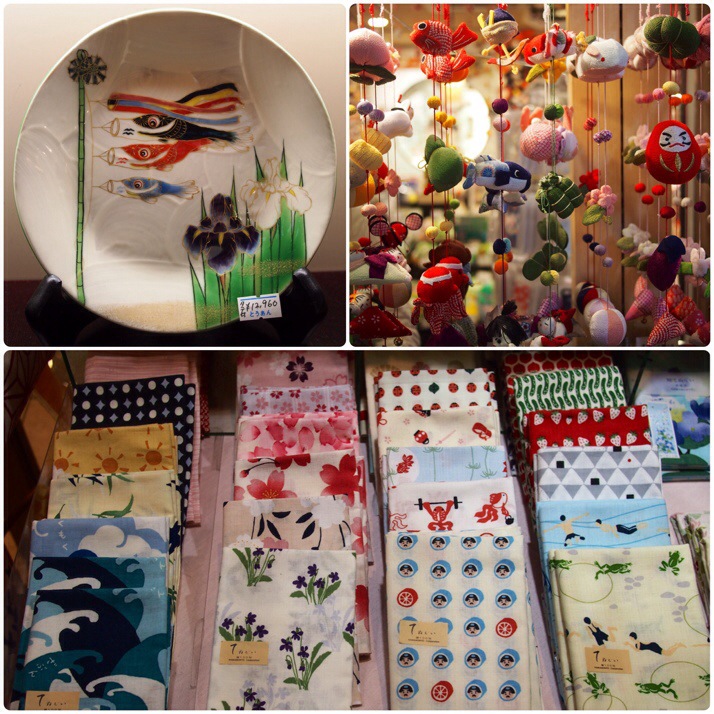 Souvenirs included beautiful ceramics, mobiles and cotton scarves
Souvenirs included beautiful ceramics, mobiles and cotton scarves
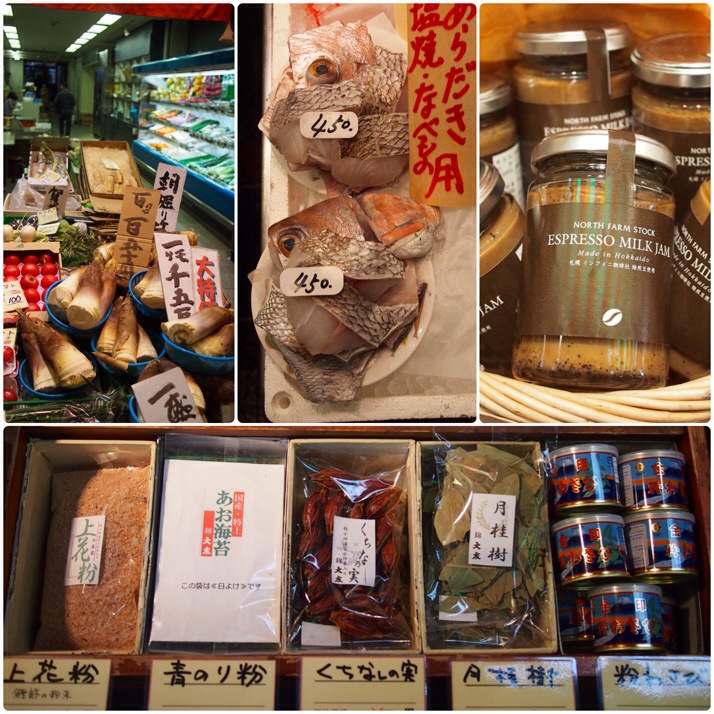 Food offerings ranged from fresh vegetables and fish to the intriguing sounding ‘Espresso Milk Jam’ (sadly no samples available) and packs of spices
Food offerings ranged from fresh vegetables and fish to the intriguing sounding ‘Espresso Milk Jam’ (sadly no samples available) and packs of spices
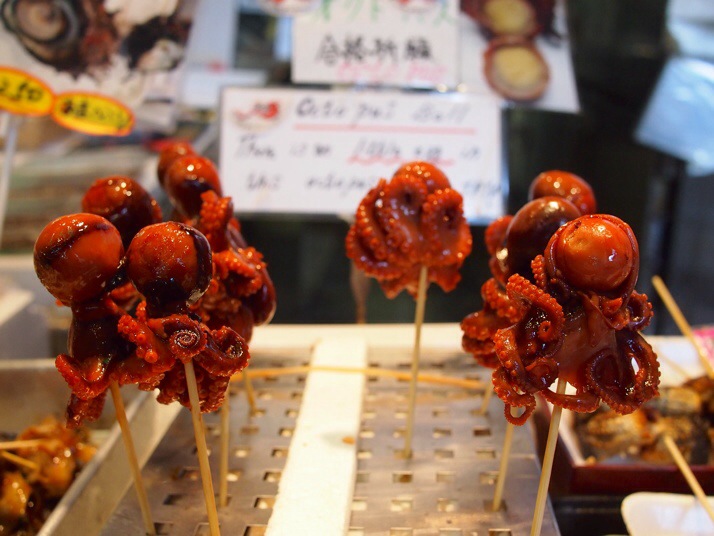 There were lots of snacks available too, these Tako-tamago looked interesting – a baby octopus with a quail’s egg in its head on a stiiiick!
There were lots of snacks available too, these Tako-tamago looked interesting – a baby octopus with a quail’s egg in its head on a stiiiick!
Kagoshima Fish Market Tour
When we read in the Lonely Planet about the weekly early morning tour of the Kagoshima wholesale fish market I got very excited, to the point of planning our trip to make sure that we’d definitely be in town on a Saturday. The tour is run by a group of local hotels and ryokans, but it’s not necessary to be staying with one of them to join in.
We were collected from our hotel just after 7am and whisked off to the Wholesale Fish Market on the seafront where we were issued with wellies and met our guides and the rest of the group – two locals and a group from a Hong Kong TV company (without their video cameras). A market representative guided the group in Japanese, but fortunately for us Yukiko, one of the hotel managers, spoke good English and gave us a really good overview of what we were seeing.
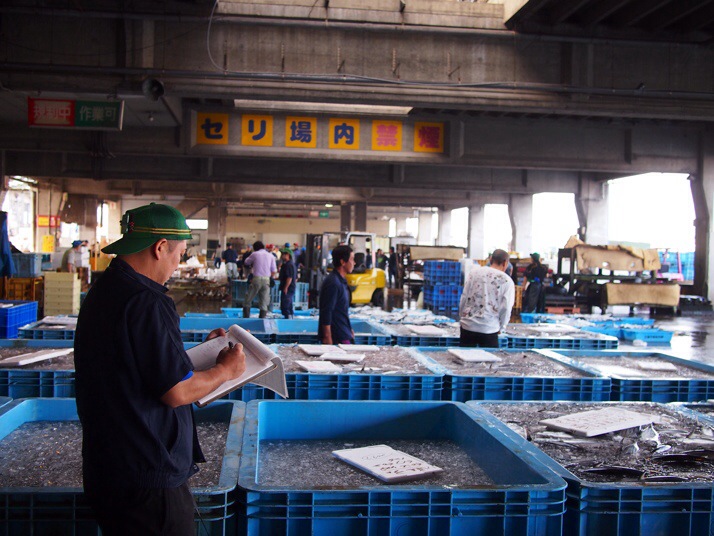 Bustling commercial fish market in Kagoshima
Bustling commercial fish market in Kagoshima
When we arrived fish was being auctioned. The smallish group of wholesalers moved around to each of the crates with the auctioneers amidst a cacophony of bells and whistles. Everything happened very fast, there was a lot of cryptic jargon (even to Japanese ears not in the know) and the bidding was done by the wholesalers quickly scribbling their price on a clapper-like pocket chalkboard which was then flipped open at the auctioneer so that only he could see it. To us, it seemed like the wholesalers got one shot at naming their price for each crate before the auctioneer moved on to the next.
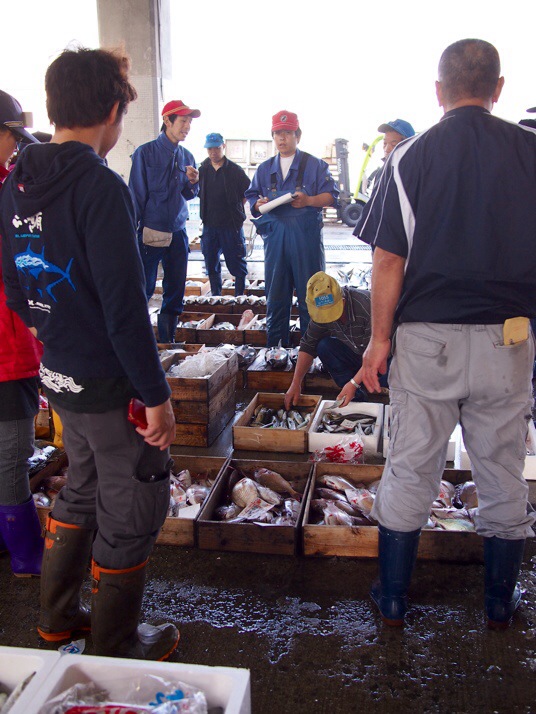 Auction in progress, the guys with the red caps are the auctioneers
Auction in progress, the guys with the red caps are the auctioneers
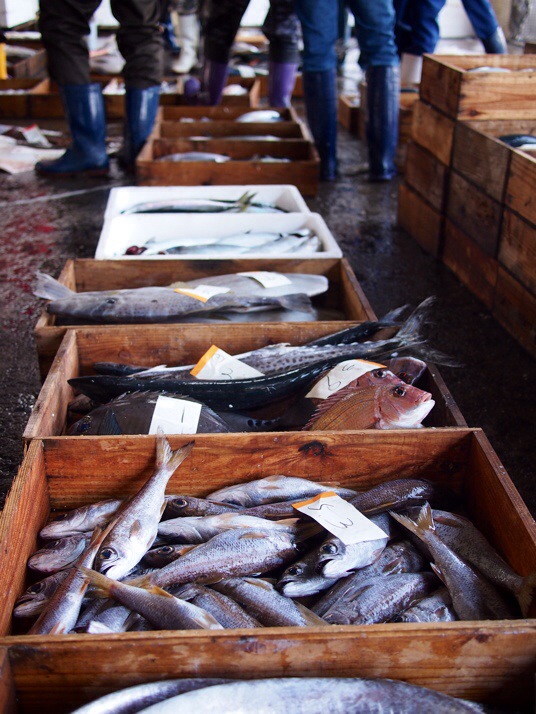 Wellington boots are pretty much required footwear around the wet floor of the fish market
Wellington boots are pretty much required footwear around the wet floor of the fish market
We were able to wander fairly freely, trying not to get in the way and marvelling at the huge diversity and amazing freshness of the fish. I’ve never seen eyes so bright or scales so shiny. Obviously the quantity and variety of fish each day varies. Yukiko told us that this morning’s catch was a particularly good one.
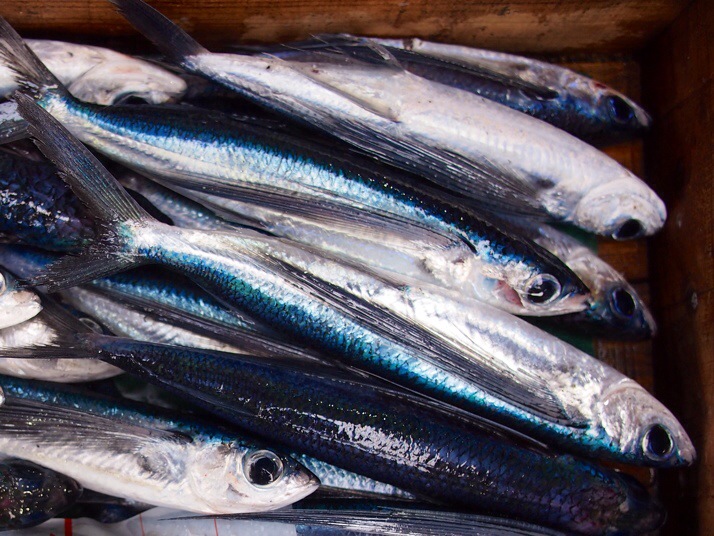 Flying fish are a specialty of the Kagoshima area. Their pectoral (side) fins are very long to allow them to glide over the water’s surface.
Flying fish are a specialty of the Kagoshima area. Their pectoral (side) fins are very long to allow them to glide over the water’s surface.
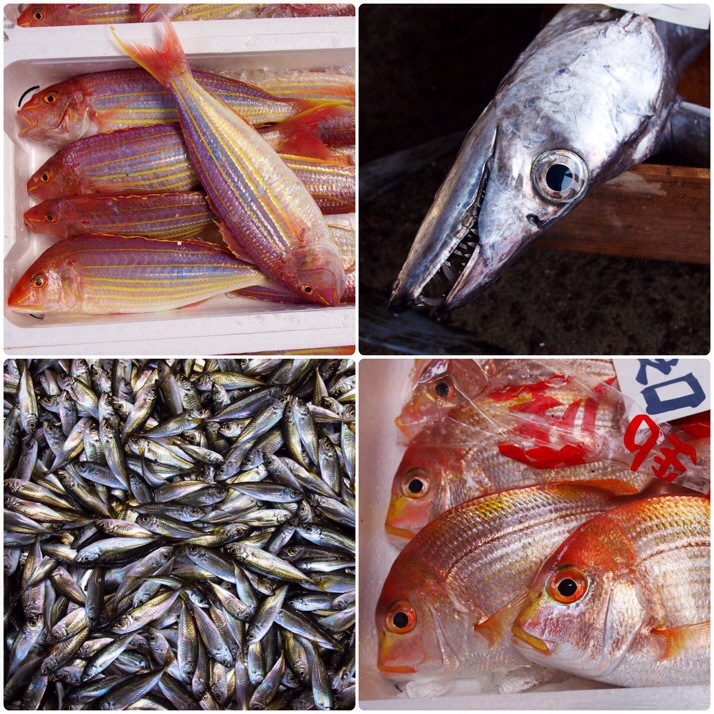 Fish of all different shapes, sizes and colours
Fish of all different shapes, sizes and colours
Next we moved into the section of the market where the wholesalers sell to trade, i.e. restaurants and fishmongers selling to the public. Here we were given a demonstration of a 40kg tuna being carved and even got to try some as sashimi – short of cutting it up on the boat, I don’t think we could get it any fresher than that!
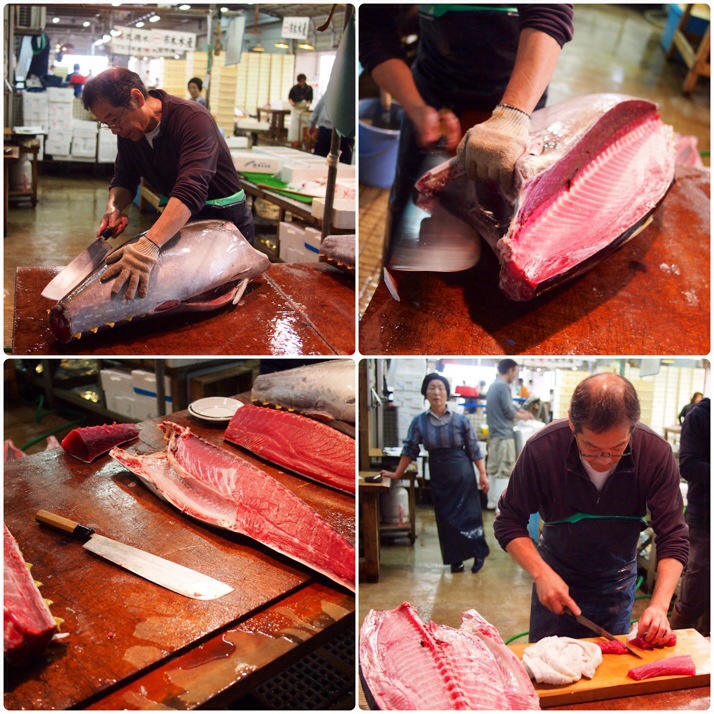 Tuna preparation: from whole fish to delicious sashimi in less than 10 minutes!
Tuna preparation: from whole fish to delicious sashimi in less than 10 minutes!
Some fish varieties aren’t available locally and these are imported from as far afield as Scotland, Argentina, and Chile, and kept in huge walk-in freezers at -20oC. As you might imagine, keeping so much fish fresh in Kagoshima’s warm climate takes a lot of ice. Market employees send a piece of paper up a dangling line to order whatever quantity they need and then collect it from a nearby huge chute.
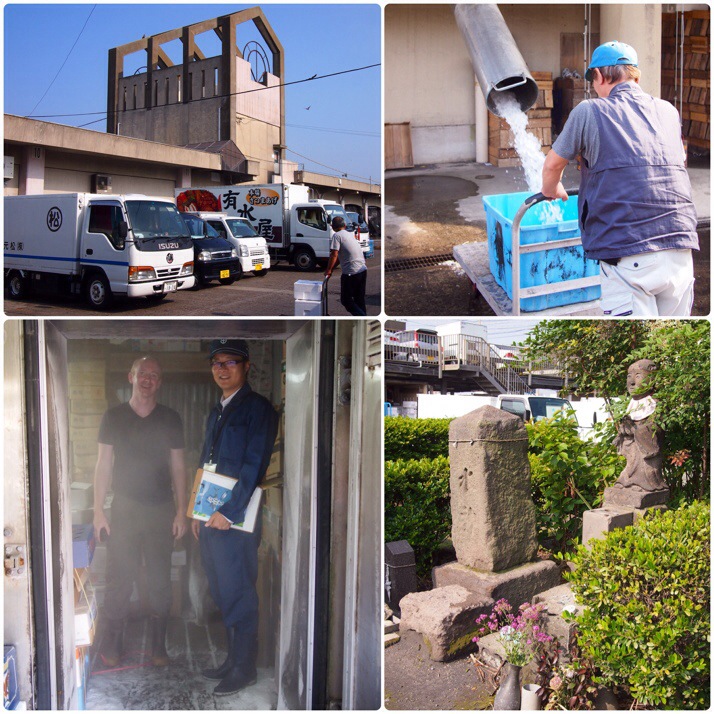 Clockwise from top left: refrigerated trucks lined up outside the fish market, collecting ice from the dispenser, the market’s shrine to the god of the sea where thanks are given for its generosity, Andrew and our guide inside the walk-in freezer
Clockwise from top left: refrigerated trucks lined up outside the fish market, collecting ice from the dispenser, the market’s shrine to the god of the sea where thanks are given for its generosity, Andrew and our guide inside the walk-in freezer
There are a couple of restaurants on site that serve meals to the employees and workers at the market, but they’re also open to the public whether you’ve been on the market tour or not. The whole group went to one of them after the tour. Andrew and I ordered the huge sashimi set which contained some slightly exotic items (a large sea snail, and sea urchin) as well as more familiar fish.
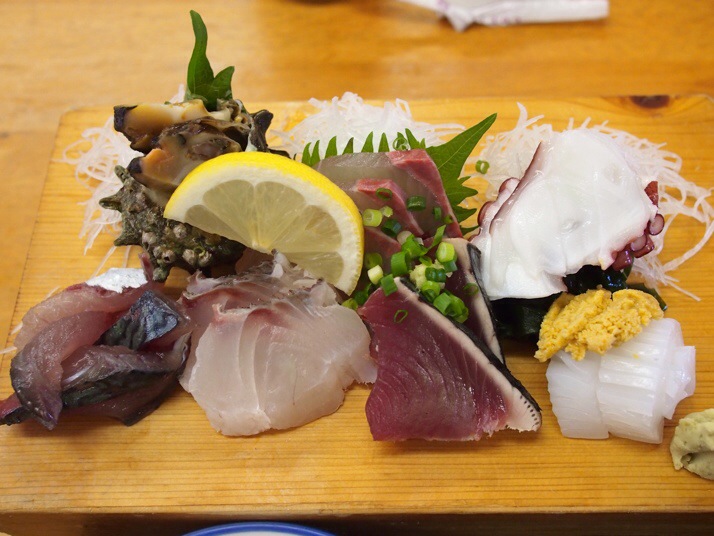 A sashimi feast! The snail is at the top left of the picture, the sea urchin is the orange coloured meat in the middle right. As well as this mountain of raw fish, the set meal also included rice, miso soup and pickled vegetables.
A sashimi feast! The snail is at the top left of the picture, the sea urchin is the orange coloured meat in the middle right. As well as this mountain of raw fish, the set meal also included rice, miso soup and pickled vegetables.
After seeing the workings of the market it was great to sample some of its delicious wares, and to talk with the hotel managers who created the fish market tour, and who continue to run it every week with the support of the Kagoshima Fish Market.

 two year trip
two year trip